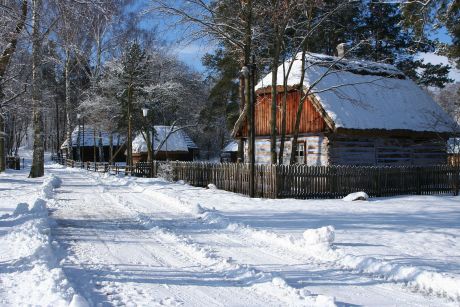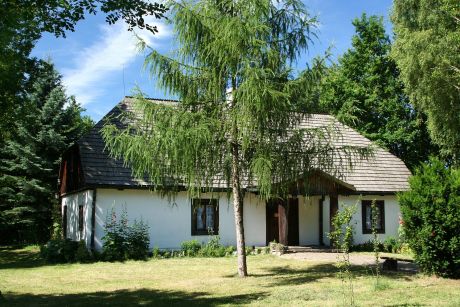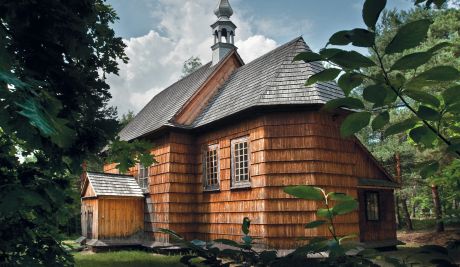For many centuries the manor has been a pearl among the land property in Brzeźce. Made of larch wood, decorated with interesting architectonical details, such as column porch, veranda and balcony it was a joy of his owners. As in the past its appearance around interest.
The history of the manor and property in Brzeźce has not been fully known. What has been known is the fact that since the 16th century the property belonged to the family of Brzeski, then for a short time it was owned by the family of Bylina and then it was purchased by the family of Kożuchowski, in the hand of whom it remained until the end of the 17th century. What has not been known is the fate of building in the 18th century. There is only some information about parti - cular persons connected to it. Around 1780 Marcin and Urszula Wolski were registered as the owners, but already nine years later it was a Rogowski. In 1792-1839 Brzeźce belonged to Józef Zapolski, who in 1840 purchased the property to the family of Sadowski. In 1891 as a result of bidding, Brzeźce was purchased by Adolf Bagniewski of Bawola Głowa coat of arms.
Moreover, archive materials do not unanimously point the founder and author of the architec - tonical project design of the current manor in Brzeźce. The workers located it in the centre of an English park. The building was made of larch plastered beams. A decoration of a hip roof is constituted by small windows, known as oeil-de-boeufs. The main entrance leads through a column porch, the height of which encompasses two storeys. The second entrance, located in the back of the building is preceded by a wooden veranda. In the side wall and additional economic entrance was planned. The interior is decorated with tail stoves and a stylish chimney. According to the memories of the old inhabitants the interior of the living room, library, dining room, office, bedroom and guest rooms was eclectic.
In the 1930s the surface area of the property amounted to approx. 500 ha. The last owner, Leon Bagniewski, bred thoroughbred and the so-called “remonty” – horses of half-Arabian blood eagerly purchased by the military service in cavalry units. After the Second World War the property was nationalized and adapted for the needs of a local primary school.
In 1984 the manor was disassembled and moved to the area of Radom Village Museum, whereas it was reassembled in the initial architectonical form. Currently the object is used for organization by the Museum of scientific exhibitions and conferences.











